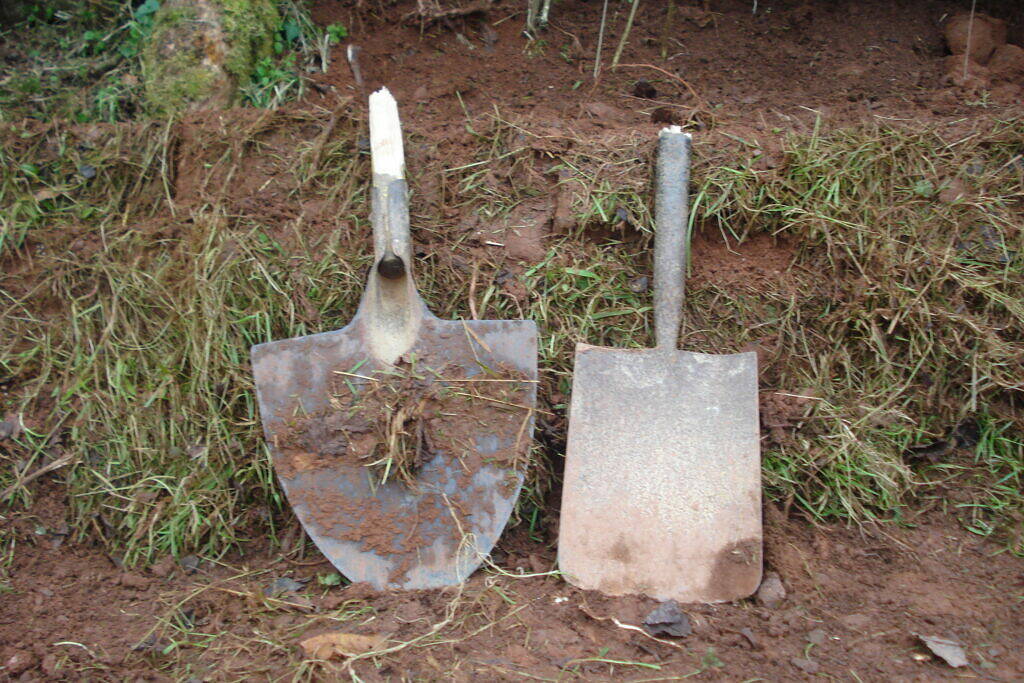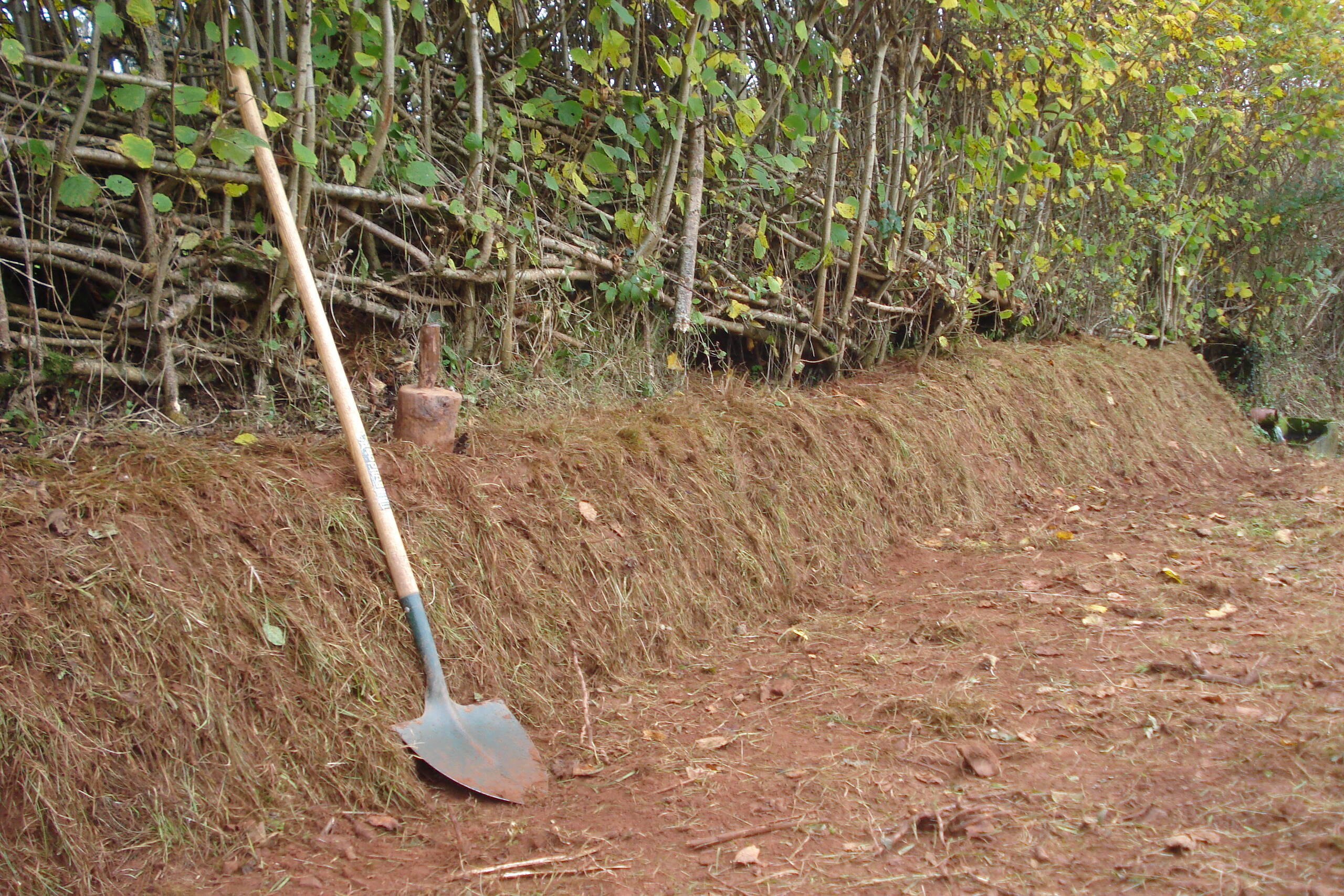It was worth stepping back from the worksite and looking from a distance: the farm’s hedges were a dazzle of yellows, browns and greens as the leaves really begin to show autumn is with us.
Easy to forget this is a worked landscape. Easy to forget the hedges and the banks they grow on are the result of a centuries-long cycle of rejuvenation and repair. Indeed, many of these hedges had been laid by Devon Rural Skills Trust in he last ten years or so.
Our job today was to repair one of the banks, cutting turf blocks from an adjacent field and using them to rebuild the bank’s crumbling side, a process known as turf hedging. A Devon hedge, unlike those in many other places, consists of a bank with small trees laid on top, the two together forming the barrier. The bank can be faced with stone or, as in this case, turf.
The, roughly speaking, square blocks are cut from the field with a shovel and lined against the side of the bank in much  the same way as you would lay a brick wall. As each new tier is put in place you carefully tamp down the soil behind, to bind the turf blocks to the bank. There are some tricks of the trade: each tier is placed ever-so-slightly proud of the one above, to allow rain water to percolate through the soil. The weather-facing side is often built at a steeper angle than the drier northerly face to better cope with the south-westerly gales. Some turf hedgers, meanwhile, like to build a slightly concave face, to deter sheep from trying to scale the bank’s side.
the same way as you would lay a brick wall. As each new tier is put in place you carefully tamp down the soil behind, to bind the turf blocks to the bank. There are some tricks of the trade: each tier is placed ever-so-slightly proud of the one above, to allow rain water to percolate through the soil. The weather-facing side is often built at a steeper angle than the drier northerly face to better cope with the south-westerly gales. Some turf hedgers, meanwhile, like to build a slightly concave face, to deter sheep from trying to scale the bank’s side.
Turf hedging is a useful skill for any hedgelayer to have in their back pocket, not just in order to rebuild banks already faced with turf, but also as a quick way of repairing short sections of decaying hedge banks when there is no stone available. But like many of these skills sometimes it can be a bit of a back-breaker, as the day’s broken tools testify.
sections of decaying hedge banks when there is no stone available. But like many of these skills sometimes it can be a bit of a back-breaker, as the day’s broken tools testify.
The hedged landscape I described at the beginning is a fixed, tangible part of our cultural heritage. Turf hedging, a skill like so many others that is often unsung and often undervalued, is less visible in the countryside and in our imaginations, an intangible part of that familiar, tangible day-to-day heritage.
Curiously the UK is one of the few countries not to have ratified UNESCO’s Convention for the Safeguarding of the Intangible Cultural Heritage, a reminder that so many of these skills struggle to find a place in a society that seems to put more value on things, rather than the craft needed to make and repair them.
The finishing touch to the reconstructed bank was a crown of turf placed on top. And as the late afternoon light began to fade blackbirds and robins could be seen in their familiar hedge, busy snacking on what they could find in the fresh turf, gifted to them by people practising a funky but intangible skill.
